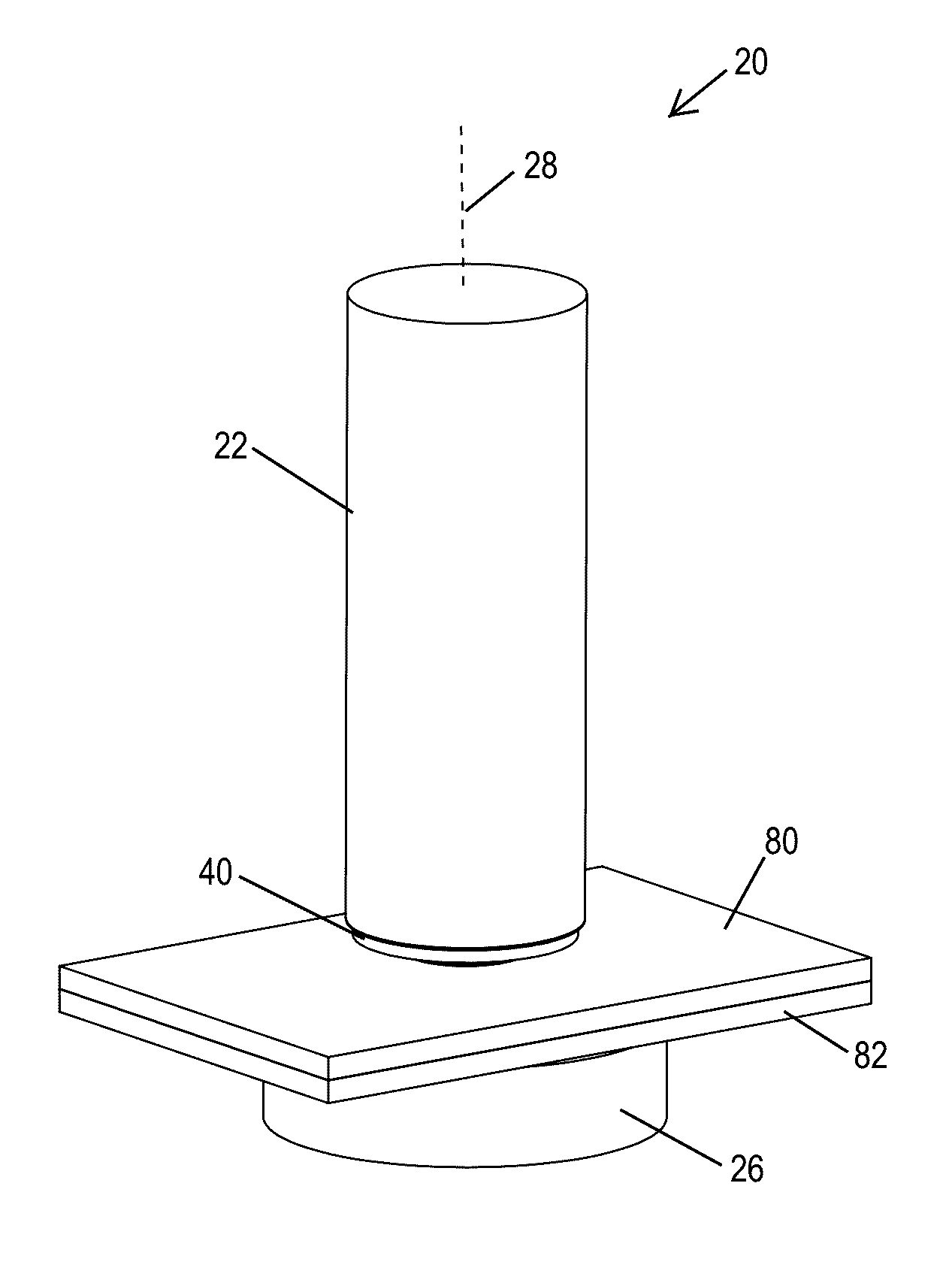Friction stir welding fastener
a technology of friction stir and fastener, which is applied in the direction of electron beam welding apparatus, non-electric welding apparatus, metal-working apparatus, etc., can solve the problems of difficult fastening of dissimilar materials, high torque required to hold materials in place so they do not spin, and more complicated parts such as those used in the automotive industry, so as to reduce the amount of energy input (friction, pressure, torque) and enhance the effect of joining
- Summary
- Abstract
- Description
- Claims
- Application Information
AI Technical Summary
Benefits of technology
Problems solved by technology
Method used
Image
Examples
Embodiment Construction
[0042]The present invention provides an induction-assisted hybrid joining of dissimilar materials concept that is a novel method for joining a variety of dissimilar materials, including, but not limited to, steel, aluminum, magnesium, plastics, plastic composites, or any combination thereof, for example. The process uses a one-step multi-material hybrid fastener to overcome existing technologies' current limitations. The fastener is revolutionary in that it combines, depending on the application, various aspects of rivets, bolts, friction stir welding (FSW), and adhesives. The induction heating process may utilize aspects of the processes described in U.S. Pat. No. 8,479,552 and / or U.S. patent application Ser. No. 12 / 124,347, filed May 21, 2008, and / or Ser. No. 13 / 111,399, filed May 19, 2011, which are hereby incorporated herein by reference in their entireties.
[0043]The apparatus and fastener and system of the present invention may fasten one of the more challenging material combin...
PUM
| Property | Measurement | Unit |
|---|---|---|
| magnetic | aaaaa | aaaaa |
| heat | aaaaa | aaaaa |
| magnetic curie temperature | aaaaa | aaaaa |
Abstract
Description
Claims
Application Information
 Login to View More
Login to View More - R&D
- Intellectual Property
- Life Sciences
- Materials
- Tech Scout
- Unparalleled Data Quality
- Higher Quality Content
- 60% Fewer Hallucinations
Browse by: Latest US Patents, China's latest patents, Technical Efficacy Thesaurus, Application Domain, Technology Topic, Popular Technical Reports.
© 2025 PatSnap. All rights reserved.Legal|Privacy policy|Modern Slavery Act Transparency Statement|Sitemap|About US| Contact US: help@patsnap.com



